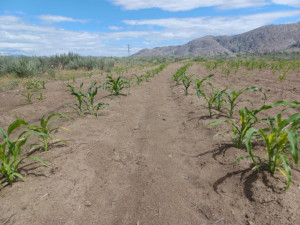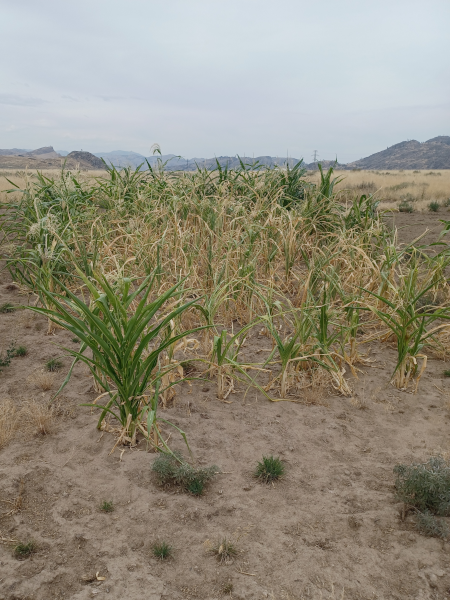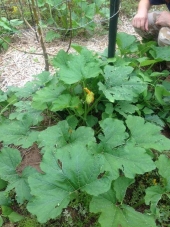
 10
10




sow…reap…compost…repeat
 4
4




 1
1




We have had some success with blue corn on the highest, driest, most exposed part of our property ... planted in early July right as the monsoons started.
Rabbitbrush and snakeweed are two plants they see as indicating prime areas
sow…reap…compost…repeat
 7
7




 6
6




I also did a test this time and these seeds amazingly germinated at a depth of 8”. I’m going to plant up to 10-12” next time and see if that helps with better rooting and plant stability. I had a lot fall over from the heavy rains and winds.
sow…reap…compost…repeat




 1
1




1) is easy, I'll try that... but how important is 2)? With bog standard corn, do i just plant more in the hole to get more chance of success, or can i go halves on the method going maybe 4 or 6 inches deep rather than 8 or 12?
sow…reap…compost…repeat
 1
1




Amy Gardener wrote:
Healthy sagebrush and four-wing salt bush were also identified as potentially promising locations. Washes and places with signs of run-off collecting from nearby slopes indicate greater moisture under the soil surface. Looking for signs of water awakens my senses and cultivates my own roots in this desert.








Skyler Weber wrote:I am not ready to give up because the idea of water-free corn is too awesome to let go. But, I want to try different seed. Has anyone had good (or mediocre) results and can you post the links of where you go the seed?
 5
5





Increasing Crop Productivity, Soil Quality, Water Absorption & Retention in the Absence of Irrigation
https://coragarden.com/hopi-dryland-corn-2024.php
 4
4





Increasing Crop Productivity, Soil Quality, Water Absorption & Retention in the Absence of Irrigation
https://coragarden.com/hopi-dryland-corn-2024.php




I'm only 64! That's not to old to learn to be a permie, right?

|
So it takes a day for light to pass through this glass? So this was yesterday's tiny ad?
Binge on 17 Seasons of Permaculture Design Monkeys!
http://permaculture-design-course.com
|





